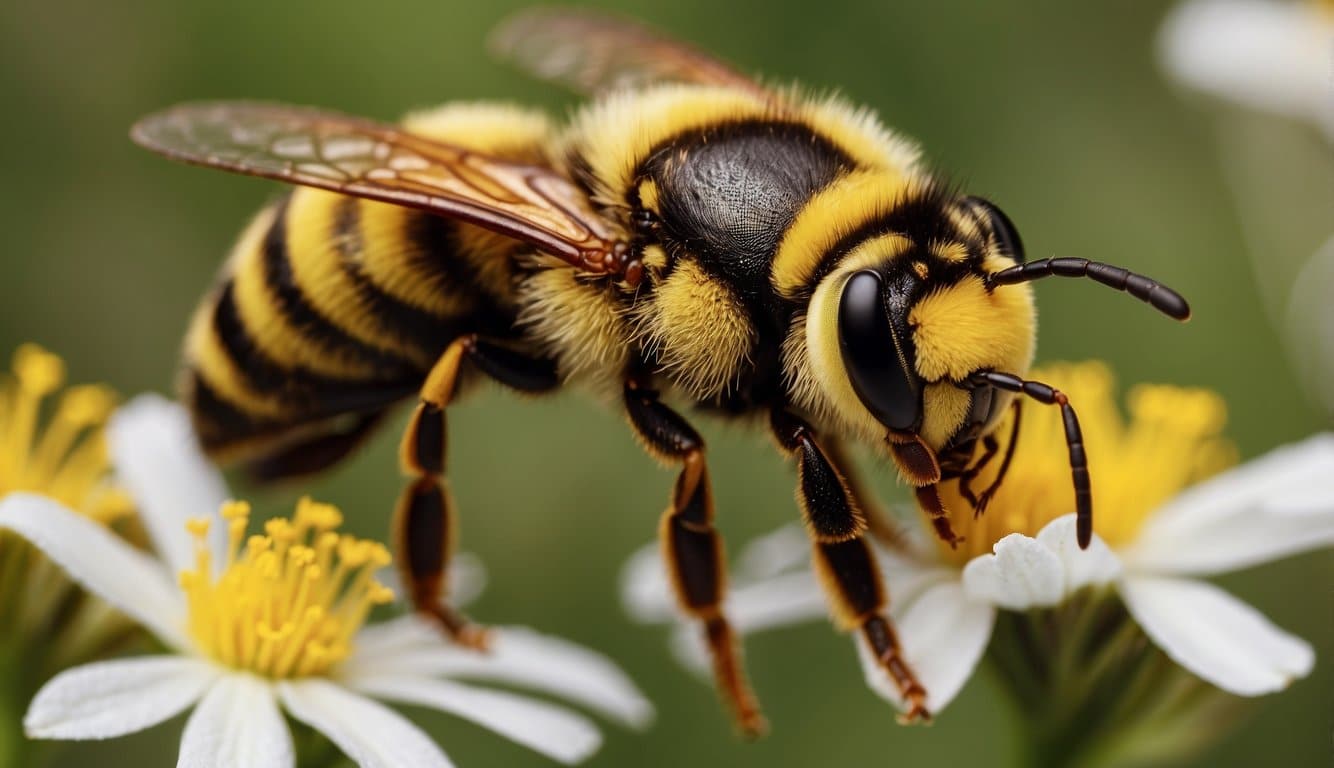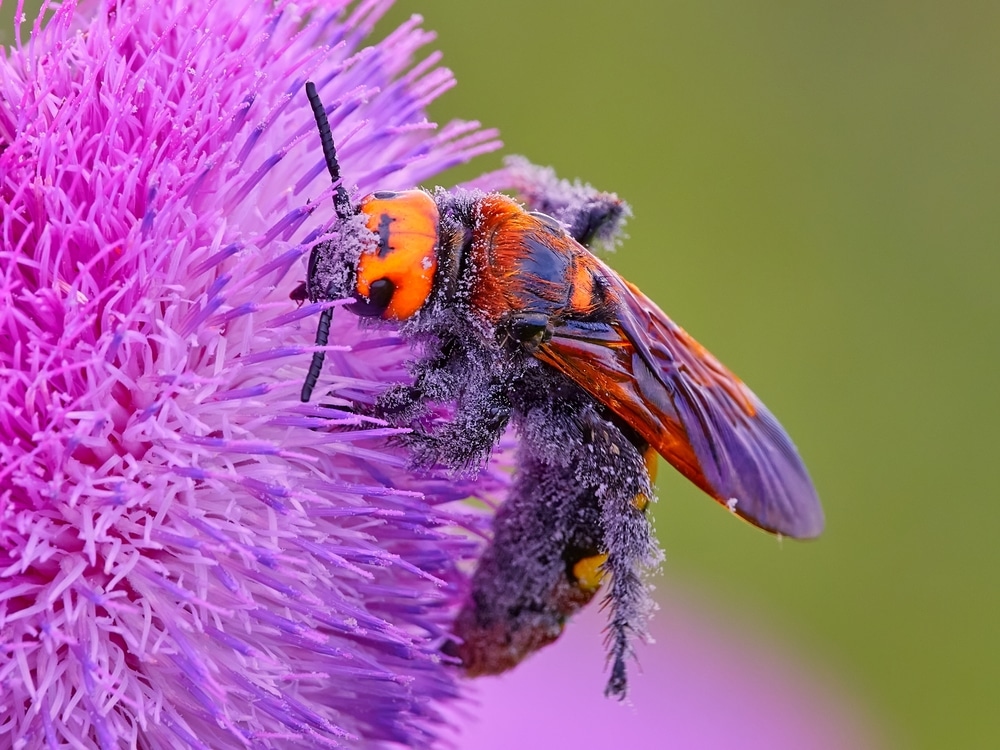| Question | Are Yellow Jackets Pollinators? |
|---|---|
| Answer | Yes, but Not Primary Pollinators |
| More Info | Yellow jackets, a type of wasp, do participate in pollination but are not considered primary pollinators like bees. They have less hair on their bodies, which means they carry less pollen from flower to flower. While they primarily hunt other insects, their search for nectar leads them to contribute to pollination incidentally. However, their impact on pollination is relatively minor compared to bees. |
Yellow jackets, often mistaken as aggressive pests, actually play a more complex role in our gardens and ecosystems.
When you think of pollinators, you might immediately picture the humble bee busily transferring pollen. However, yellow jackets, a type of social wasp, contribute to this process as well.
Though not as efficient as bees, their foraging activities inadvertently assist in the pollination of various plants.
As you observe yellow jackets buzzing around your garden, you’re witnessing more than a quest for their next meal; you’re seeing potential pollination agents at work.
In your garden, yellow jackets may be attracted to the same colorful blooms that lure bees and butterflies, engaging with flowers like squash, cucumber, and wildflowers such as goldenrod and milkweed.
While their primary goal is often to hunt for insects or seek out sugars, their body contact with flowers results in pollen sticking to them and subsequently being transferred to other plants.
This incidental pollination can be particularly noticeable during late summer and fall, when their populations peak and their activity becomes more visible.
Yellow Jackets as Pollinators
Yellow jackets, often mistaken for bees, have a notable yet occasionally overlooked role in your garden’s ecosystem, particularly in pollination.
Ecological Role
Yellow jackets contribute to the biodiversity of ecosystems by acting as pollinators, especially late in the season.
While they’re not the primary pollinators like bees, their search for nectar leads them to inadvertently transfer pollen between flowers.
This incidental pollination supports the life cycle of various plants, many of which you might enjoy in your garden.
Pollination Mechanism
When yellow jackets forage for nectar and food, pollen grains stick to their bodies.
As they move from flower to flower, they transfer pollen, effectively aiding in the fertilization of plants.
Understanding this mechanism showcases the importance of every creature in your garden, even those who might not seem as friendly at first glance.
Comparison with Other Pollinators
In examining the role of yellow jackets as pollinators, it’s informative to compare them with other pollinators, notably bees, to understand their respective contributions to pollination.
Bees and Wasps
Bees: Renowned for their pollinating prowess, bees possess hairy bodies and pollen baskets on their legs, making them highly efficient at transporting pollen between flowers.
Yellow Jackets: Although not as efficient as their bee counterparts, yellow jackets can still participate in the process of pollination inadvertently as they visit flowers seeking sugary nectar.
Efficacy in Pollination
- Pollen Transfer: Bees’ deliberate collection of pollen results in a more effective transfer of pollen from flower to flower.
- Incidental Pollinators: While yellow jackets do not have structures evolved specifically for pollination, they can still carry pollen from one flower to another, albeit less effectively.
Impact on Agriculture
Yellow jackets play a nuanced role in your fields and orchards. Assess their presence carefully to understand whether they are beneficial to your crops or pose a threat that needs to be managed.
Beneficial Aspects
Yellow jackets are more than just a nuisance at your picnics; they have a positive role in agriculture.
They are capable of pollinating plants as they forage for food, inadvertently transferring pollen from one flower to another.
This behavior facilitates the fertilization process which is essential for fruit and seed production in many crops.
Moreover, yellow jackets feed on pests such as grubs and caterpillars, providing a form of natural pest control.
Potential Threats
Despite their benefits, yellow jackets can present certain threats to agriculture.
They may become aggressive if they sense their nest is in danger, leading to potential harm for you and your farm workers.
It’s crucial to identify and manage their nests, especially in areas of high human activity.
Additionally, at certain times of the year, they show a preference for sugary substances, which can lead them to feed on ripe fruits, causing damage to your produce.
Keep an eye out for increases in yellow jacket populations, as they can disrupt not just the harvesting process but also the quality of your crops.
Frequently Asked Questions
In this section, you’ll find answers to common questions regarding the role of yellow jackets in pollination, their impact on ecosystems, and their behavior relative to other pollinators.
What role do yellow jackets play in pollination?
Yellow jackets, while being predators and scavengers, are also inadvertent pollinators. They transfer pollen while foraging for food on flowers which aids in plant fertilization.
Can yellow jackets have a positive impact on ecosystems?
Yes, yellow jackets can positively affect ecosystems through their pollination activities and pest control, helping maintain ecological balance.
What is the difference between yellow jackets and bees in terms of pollination?
Bees are dedicated pollinators with body structures designed to collect pollen, whereas yellow jackets are occasional pollinators; they do not have specialized structures but can still aid in pollination incidentally.
How do yellow jackets interact with other bees and pollinators?
Yellow jackets may compete for food sources with other pollinators, but they usually don’t directly harm them unless threatened or competing for limited resources.
What are the ecological consequences of yellow jacket populations declining?
A decline in yellow jacket populations could lead to a disrupted balance in ecosystems where they serve as both predators controlling pest populations and as accidental pollinators.
How aggressive are yellow jackets during pollination activities?
During pollination, yellow jackets are not inherently aggressive but can become so if they feel threatened or their nest is disturbed.
Last update on 2025-04-19 / Affiliate links / Images from Amazon Product Advertising API


